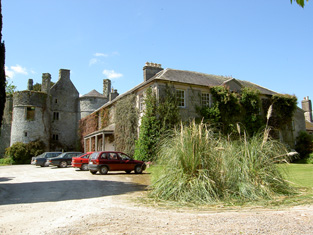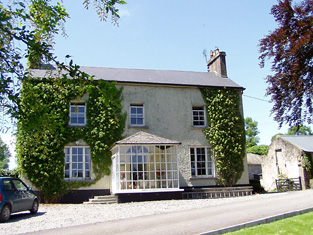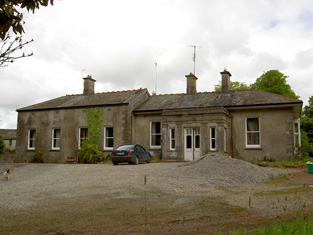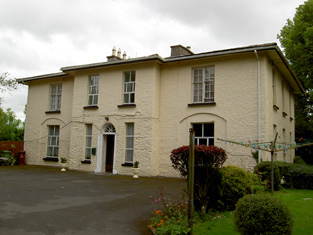Lackenacoombe
Houses within 10km of this house
Displaying 14 houses.
Houses within 10km of Lackenacoombe
Displaying 14 houses.
| House name | Description | |
|---|---|---|
| Kilmoylan | The home of Richard White in 1814 and of Newport White in the early 1850s, held from the representatives of D. Barrington. The buildings were valued at almost £18. It is no longer extant. | |
| Toomaline House | The Ordnance Survey Field Name Book refers to the building of this house by the Marshalls in 1829 and that it was the seat of William Bennet in 1839. "It is of a decayed appearance owing to the decease of the proprietor". The home of Mrs Marshall in 1837 and of Lawrence Marshall in the early 1850s, valued at £16 and held from the representatives of D. Barrington. It is still extant and occupied. |

|
| Chadville | A house valued at £11 occupied by William Ryan and held from Hugh B. Bradshaw in the mid 19th century. Later in the nineteenth century it was associated with Valentine Ryan, who held large estates in County Donegal and in Queen's County. This house is still in use as a residence. |

|
| Lacken | John Smithwick was resident at Lacken in 1837 and by George Smithwick in the early 1850s and held from Miss Mary Sadlier. The buildings were valued at £11. A house is still extant at the site. | |
| Dundrum | Dundrum was the seat of the Viscounts Hawarden in county Tipperary in the 18th and 19th centuries. The Ordnance Survey Name Books mention that the demesne was well-planted in 1840. Dundrum was held in fee by Viscount Hawarden and valued at £85 at the time of Griffith's Valuation. The Earl de Montalt was still resident in 1906 when the house was valued at £85. The Irish Tourist Association Survey states that it was bought from the Land Commission in 1908 and became St Michael's Presentation Convent. This early 18th century Palladian house now functions as a hotel located in the grounds of the Tipperary golf club. |

|
| Killenure Castle | Leet records Samuel Cooper as the proprietor of Killenure in 1814 and Lewis in 1837 as the "seat of William Cooper". At the time of Griffith's Valuation William Cooper held the property in fee and the house was valued at £31.10 shillings. The Coopers were still resident at Killenure in the early 20th century. As its webiste suggests "It has been a fortified home with sturdy towers, a'hunting box', a country house for a large family, a busy productive farm with stables and coach house, a boarding school and even a meditation centre". It will be open to the public from Summer 2012. See htp://killenure.com. |

|
| Ballywalter | F. V. Wayland was resident at Ballywalter in 1837. Francis Wayland of Ballywalter was murdered in 1838 on his way to a fair. William Weyland was living at Ballywalter in the mid 19th century, when the house was held from William Cooper and valued at £12.5 shillings. The Waylands and Coopers were related. This 18th century house is still in use as a family residence. |

|
| Marlow | An early 18th century house, the seat of a branch of the Pennefather family, with some early 20th century additions. Still extant, this house was the residence of Thomas Pennefather in 1814 and Edward Pennefather in the mid 19th century. He held the property in fee and the buildings were valued at £14. The Pennefathers were still resident at Marlow in the mid 20th century. |

|
| Grene Park | This house dates from the mid 19th century and appears to have been built [for Nicholas B. Grene] post the first edition Ordnance survey map as it is not located on exactly the same site as the previous building. Griffith's Valuation records Nicholas B. Greene occupying a house valued at £29.15 shillings, held from the representatives of Robert Usher. This house still functions as a residence. |

|
| Cappamurragh | The Grene family home occupied by John Grene in the first half of the 19th century. He held the property in fee and the buildings were valued at £24 in the early 1850s. In 1841 the Ordnance Survey Name Books describe it as "a gentleman's seat in a very handsome demesne of considerable extent". It is still extant. |

|
| Greenfield | Colonel W. Purefoy was resident at Greenfield in 1837. The Ordnance Survey Name Books refer to Greenfield as "a house in a small but well wooded demesne". By the early 1850s Edward Bagwell was the occupier. He held the property in fee and the house was valued at £27.15 shillings. Wilfred B. Purefoy occupied Greenfield in 1906 when it was valued at £38. 10 shillings. It is still extant. |

|
| Philipston | In 1840 the Ordnance Survey Name Books refer to "Phillipstown" as "a house in a small demesne". It was the residence of Hugh Brady Bradshaw in the mid 19th century, held by him from the Reverend William Guinness and valued at £16.15 shillings. This house is still extant and lived in. |

|
| High Park | The Reverend John Hunt was resident at High Park in 1814 and in 1837. By the time of Griffith's Valuation his son Vere Hunt was the occupier. The property was held from Richard Beere and the buildings were valued at £15. High Park is still extant and, in 2012, was offered for sale. |

|
| Cappagh House | Vere Hunt was living at Cappa in 1814 and Mrs [Fitzmaurice] Hunt in 1837. Arthur Hewlett was the occupier in the mid 19th century holding the property from De Vere Hunt. The buildings were valued at £26.25 shillings. Godfrey Massy Hunt of the Friarstown family was resident in the later 19th century. This house belonged to Mr Griserood in the early 1940s. A house is still extant at this location. |

